
views
Preparing to Raise Quail

Take some thought on raising quail. Quail are small and fairly easy birds to look after but do need time for feeding, refilling water containers, cleaning the cage, checking up daily, and collecting eggs. You may also encounter many problems while raising quail for the first time.
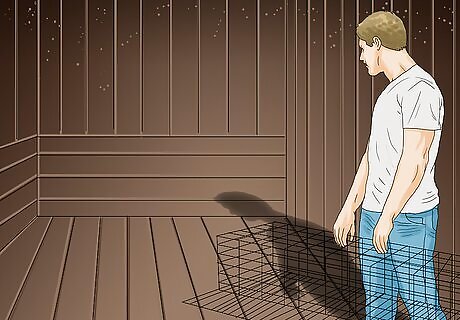
Find a space in your yard or on your balcony where you can hang a quail cage. Clear the space underneath in which to place straw. This will help you to collect and remove waste. You can also decide whether to house your quail in a different sort of housing like a rabbit hutch or something alike. However, the cage above is set up in a way to prevent diseases since quail waste is high in ammonia.
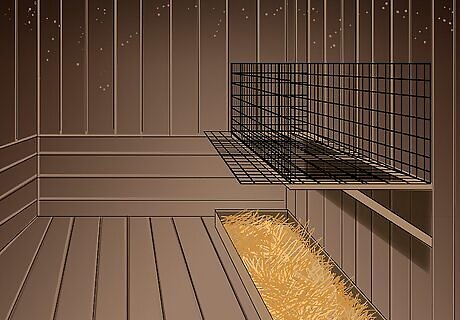
Purchase a long, narrow cage and hang it from an overhang on your house, garage or balcony. Choose somewhere that has access to light, but is blocked from strong winds. Most quail cages are built of open mesh wire, since the birds need shelter, but plenty of air. They should be housed away from predators including pets and the room shouldn't have any disturbances.
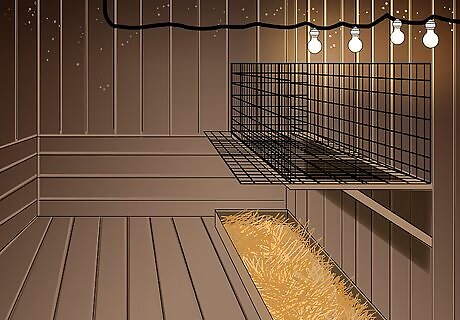
Hang some lights around the cage. This will allow you to increase egg production in the fall and winter months. The birds need 15 hours of light per day to produce eggs but any more and they will get stressed from lack of sleep.
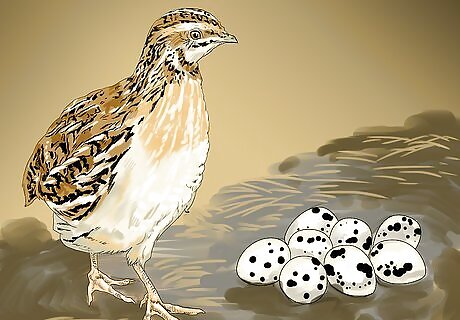
Decide if you want to buy mating birds or hatching eggs. A mature bird can cost around $5, while you can get 50 eggs for about $20. Along with the eggs you'll have to prepare to spend a lot of time caring for a bunch of chicks and you will also have to purchase some extra equipment. If it's your first time raising quail you might want to purchase some mature birds instead of hatching chicks.
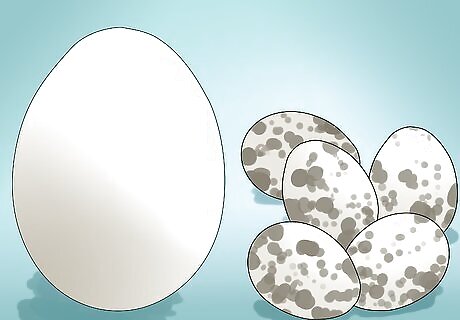
Decide how many birds you need based on your egg consumption. Figure out your weekly chicken egg consumption. It takes five quail eggs to equal one chicken egg and your mature females should lay one egg every day. Plan to get one female bird (through hatching eggs or pairs of mating birds) for each chicken egg you eat. Quail eggs can be consumed like chicken eggs; however, it requires more birds to produce the same amount.
Buying & Hatching
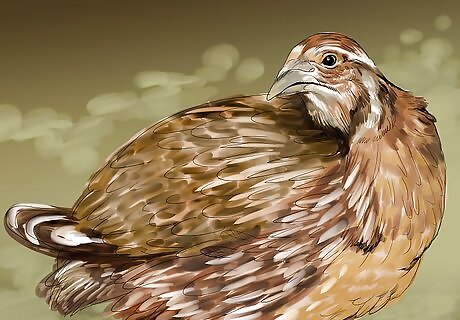
Look for a good egg-laying breed. Coturnix are highly recommended birds to keep. They aren't just good egg producers but they can also be kept as meat and are really easy to look after. If you're looking for quail that lay bigger eggs you should go for the jumbo Coturnix. Coturnix quail are also known as Japanese quail. You'll also get different coloured Coturnix quail such as the tuxedo quail which is a white and brown colour. Coturnix usually start laying at 6-8 weeks when they mature. From then on they will lay 1 egg every day. If you're not sure about Coturnix you can buy other popular breeds such as the Scaled Quail, Gambel's Quail, or the Bobwhite Quail. However, Coturnix quail is the recommended starter breed.

Go to Craigslist or look in your local paper first. The best idea is to use contacts in the local livestock or urban farming community to get birds that are acclimated to your climate.
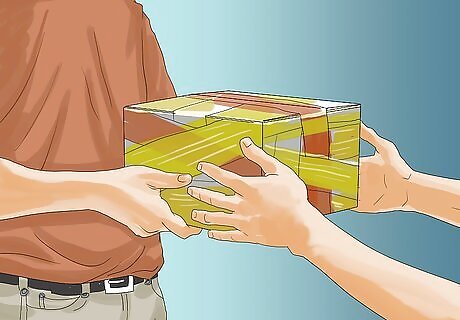
Check on eBay to find hatching eggs. They can be sent via mail; however, you may suffer higher mortality rates than if you buy locally.

Try local ranch or farm supply and feed stores. If they don't get quail each spring with their chickens and guinea fowl, they may be able to order them specially for you.
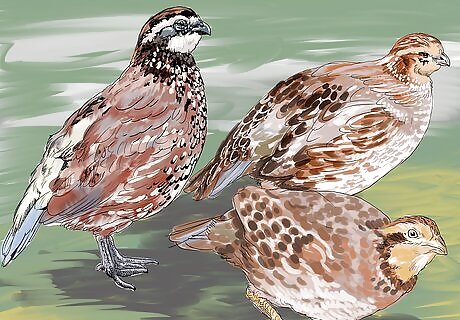
Buy at least two females for every male, but keep males separated. A preponderance of females will ensure plenty of egg production in your flock. At the same time, you'll probably only be able to house one male in each cage; if two or more males are kept in a single cage, the dominant male may attempt to kill all other males to ensure that only he will be able to mate with the female quails.

Purchase an incubator at the feed store or ranch supply store if you plan to raise hatching eggs. You can also order them in advance online. Your incubator should include an egg turner.
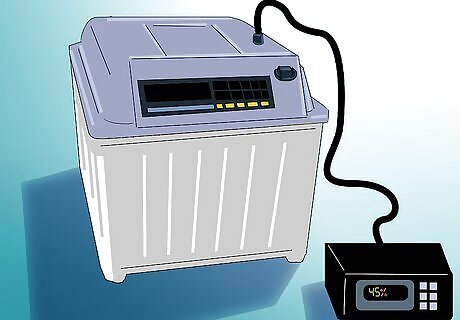
Keep the humidity at 45 to 50 percent during incubation and 65 to 70 percent during the 23rd day of hatching. Keep a humidifier or dehumidifier nearby to adjust the humidity. Humidity controls unnecessary loss of moisture in the egg.
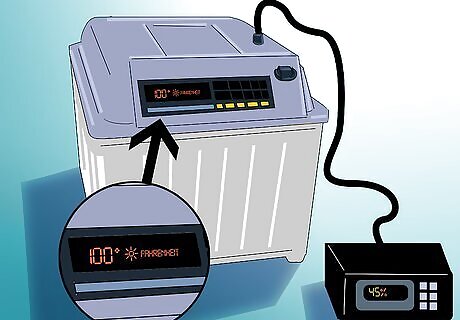
Adjust the temperature of the incubator so that it is 100 degrees Fahrenheit (40 Celsius). It is essential that you keep it even at this temperature. It will take a Couternix egg about 16 to 18 days to hatch at this temperature, while other breeds take 22 to 25 days.
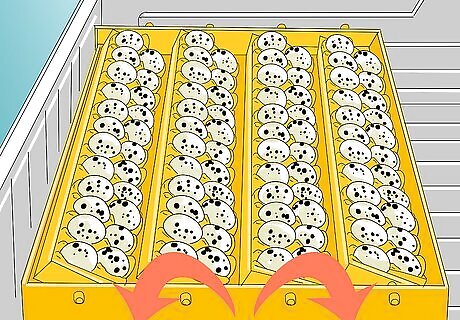
Don't turn the egg turner on until three days after the eggs are laid. Then, the tray must turn 30 degrees each way every day to keep embryos from sticking to the shell.
Caring for Chicks
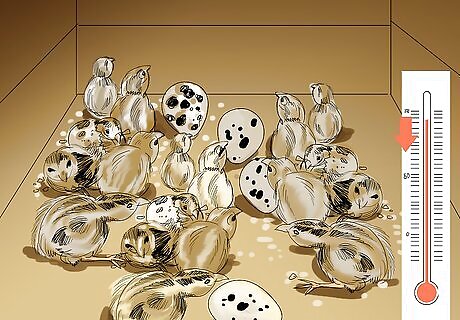
Keep the quail in a small space once they are hatched. Gradually lower the temperature from 100ºF (40ºC) to room temperature by three degrees each day. Cold chicks will bunch on top of each other whilst hot chicks will pant.
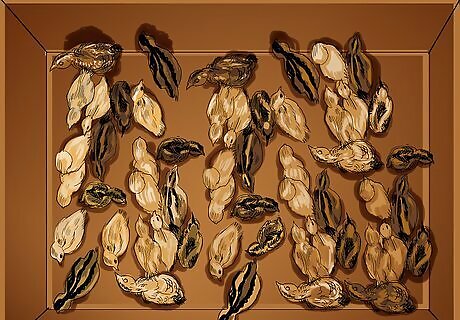
Keep up to 100 quail chicks in a two by three foot space for the first ten days. Then, give them more space as they grow.

Give chicks a chick starter feed up until they are six to eight weeks old. Chick starter provides more nutrients for your chick which is what they need, and when they get older they do not require this diet anymore. You can purchase some turkey starter or some chicken starter and grind them up into smaller grains so that the quail chicks can eat it. Any feed that is high in protein should be alright.
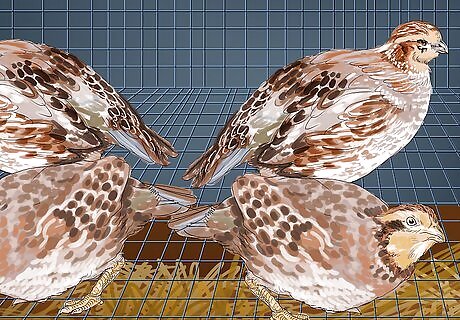
Ensure that each bird has three to 4ft (1 m) of space in the cage.
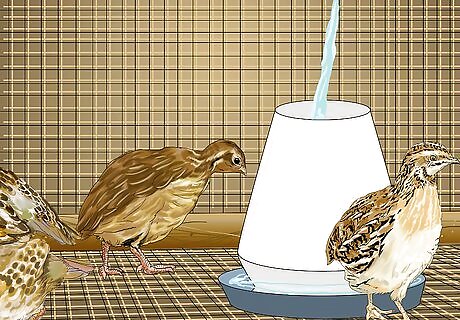
Provide quail with clean drinking water. Clean and refill their water containers daily. Make sure that the chicks cannot drown in the water container and have easy access to it. Most breeders will put marbles in the water container to prevent the quail from drowning.
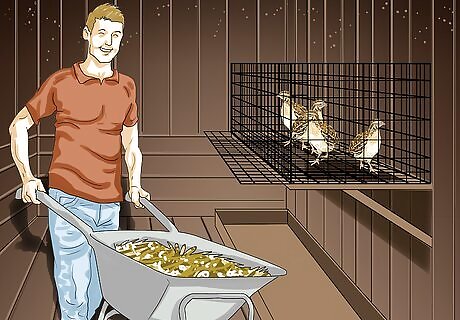
Change the straw beneath the cages daily. You can add some of it to your compost. Quail waste is high in ammonia, so it must be changed frequently.

Clean the cage out if any waste starts to build. Wash it once per week to avoid disease and illness.
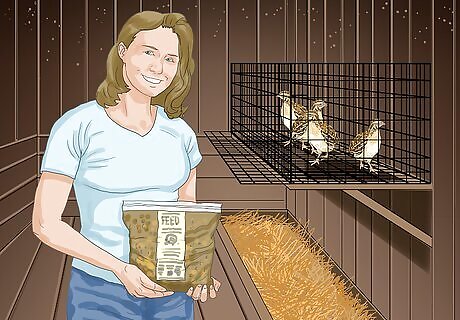
Start to adjust conditions and change the food to a laying fowl mix at five to six weeks. Special laying food is available at most feed stores. Ask if it is good for laying birds before you buy it. If you are raising quail for meat, change their food to a finisher diet instead of a laying fowl mix.
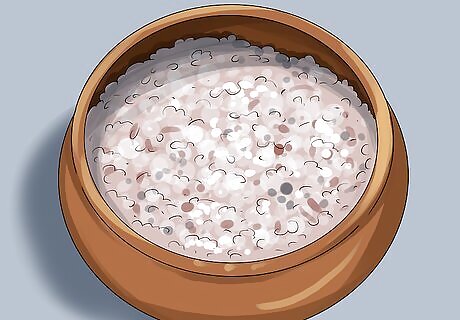
Provide crushed oyster shells and grit for your quail. The grit will help grind down the food and the oyster shells provide calcium for the quail to lay strong, healthy eggs.

Keep the animals undisturbed after six weeks of age. The females will start to lay and they will have poor egg production levels if they are exposed to other animals, noise or other disturbances.
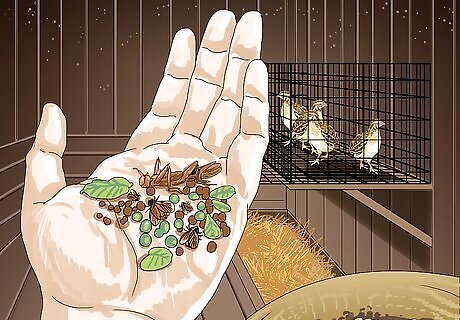
Consider adding fresh greens, seeds, and small insects to your quail feed.

















Comments
0 comment